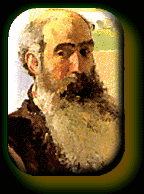“In the year 997 a Turkish chieftain by the name of Mahmud became sultan of the little state of Ghazni, in eastern Afghanistan. Mahmud knew that his throne was young and poor, and saw that India, across the border, was old and rich; the conclusion was obvious. Pretending a holy zeal for destroying Hindu idolatry across the frontier with a force inspired by a pious aspiration for booty. He met the unprepared Hindus at Bhimnagar, slaughtered them, pillaged their cities, destroyed their temples, and carried away the accumulated treasures of centuries. Returning to Ghazni he astonished the ambassadors of foreign powers by displaying “jewels and un-bored pearls and rubies shinning like sparks, or like wine congealed with ice, and emeralds like fresh sprigs of myrtle, and diamonds in size and weight like pomegranates.””
“Each winter Mahmud descended into India, filled his treasure chest with spoils, and amused his men with full freedom to pillage and kill; each spring he returned to his capital richer than before. At Mathura (on the Jumna) he took from the temple its statues of gold encrusted with precious stones, and emptied it coffers of a vast quantity of gold, silver and jewelry; he expressed his admiration for the architecture of the great shrine, judged that its duplication would cost one hundred million dinars and the labor of two hundred years, and then ordered it to be soaked with naptha and burnt to the ground. Six years later he sacked another opulent city of northern India, Somnath, killed all its fifty thousand inhabitants, and dragged its wealth to Ghazni. In the end he became, perhaps, the richest king that history has ever known.”
“Sometimes he spared the population of the ravaged cities, and took them home to be sold as slaves; but so great was the number of such captives that after some years no one could be found to offer more than a few schillings for a slave. Before every important engagement Mahmud knelt in prayer, and asked the blessing of God [Allah. lw] upon his arms. He reigned for a third of a century; and when he died, full of years and honors, Moslem historians ranked him greatest monarch of his time, and one of the greatest sovereigns of any age.”
from
How 'Gandhara' became 'Kandahar'
http://rajivmalhotra.sulekha.com/blog/post/2001/12/how-gandhara-became-kandahar.htm
Creative and Constructive Students Know: The Real Action Lies Beyond the
Walls
-
Beyond Classroom Walls: When Ancient Wisdom Meets Modern Innovation The
Restless Innovator in Today's Classroom For creative and constructive
students, the...











No comments:
Post a Comment